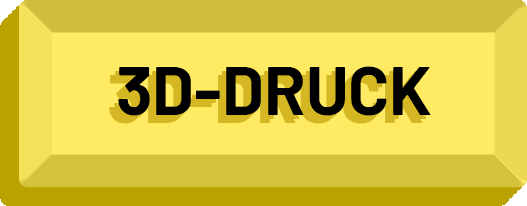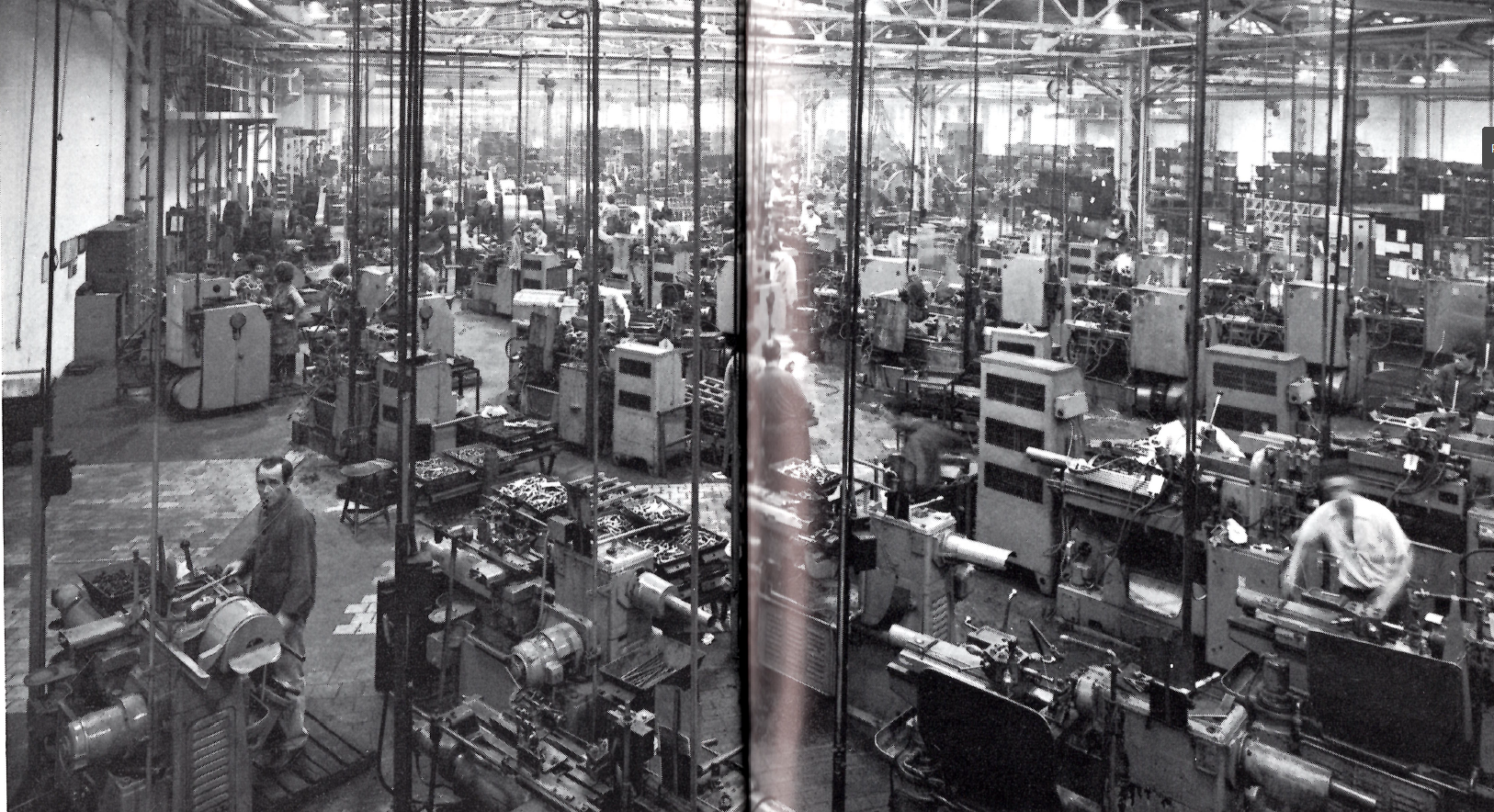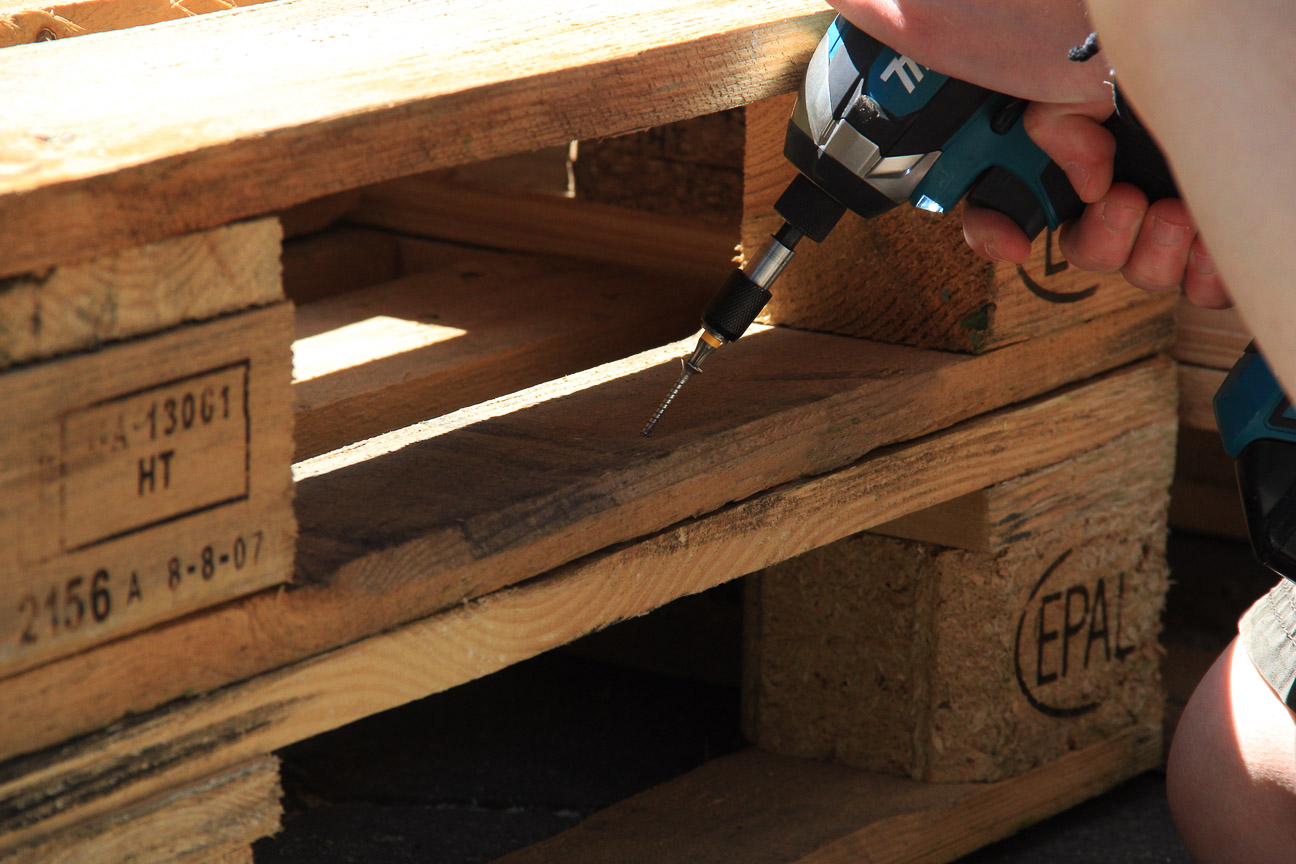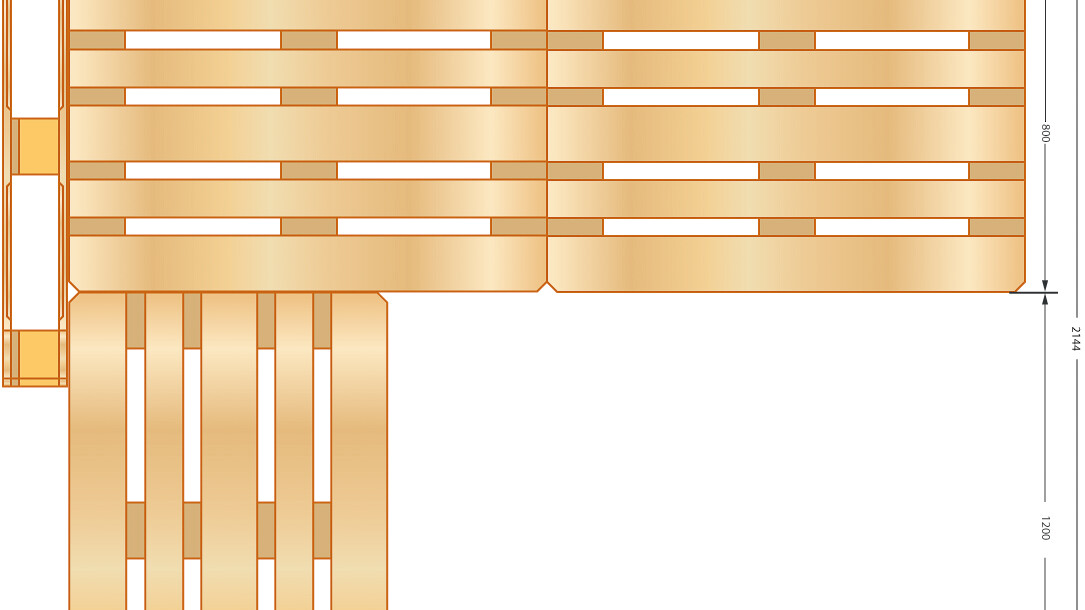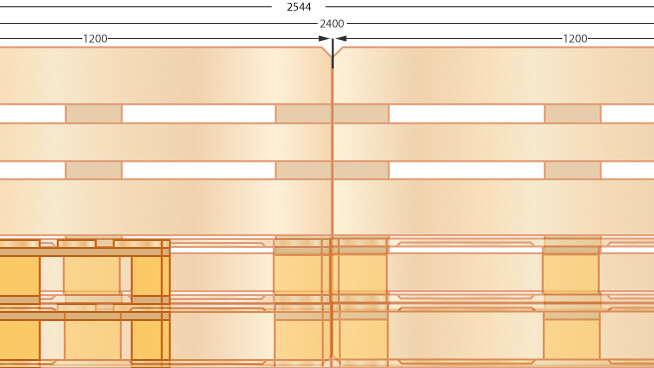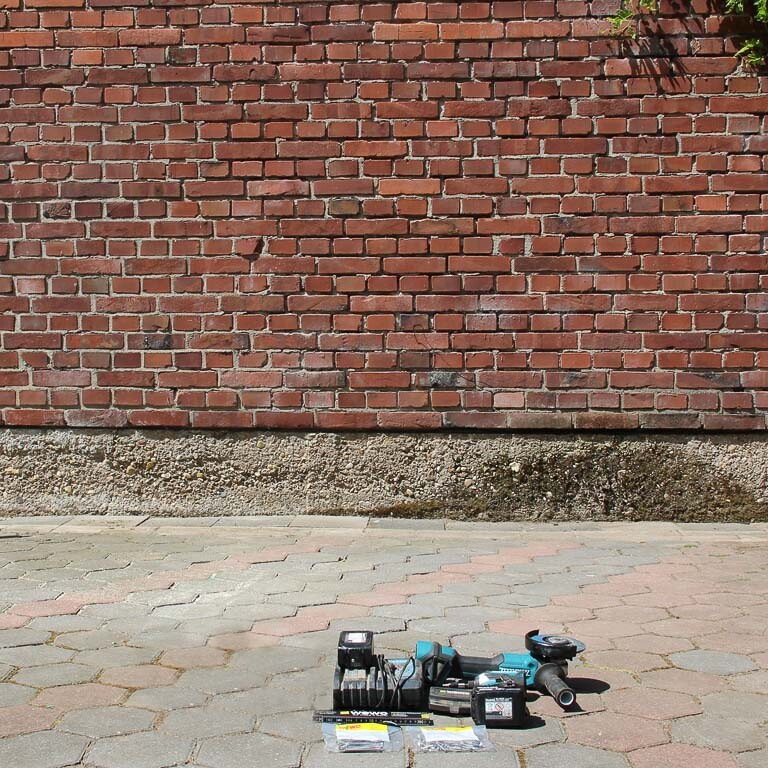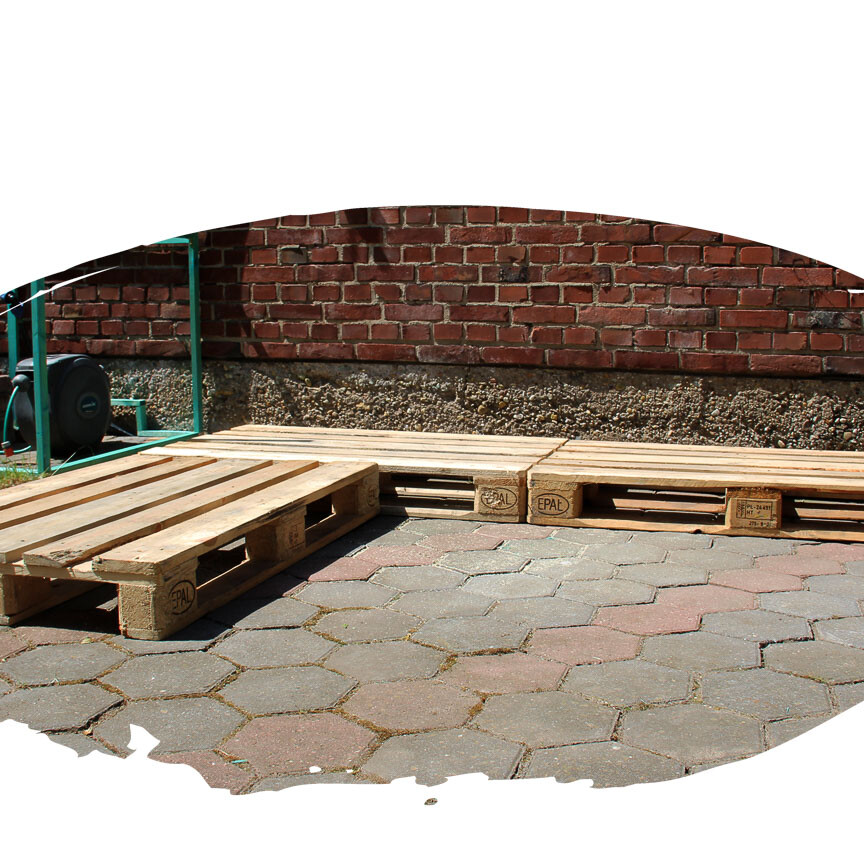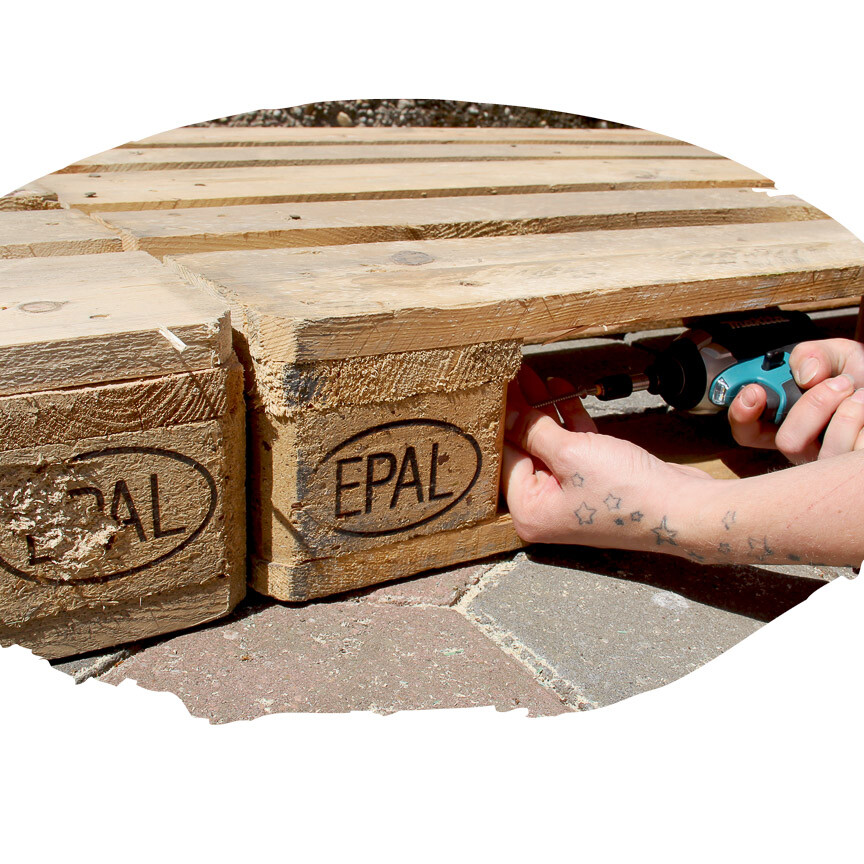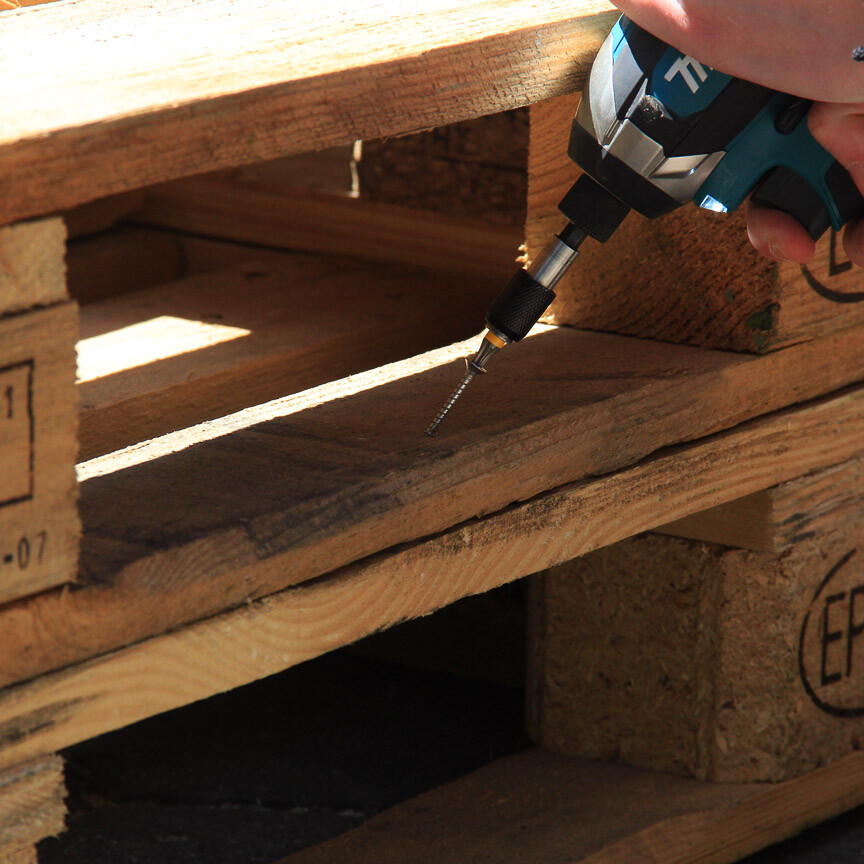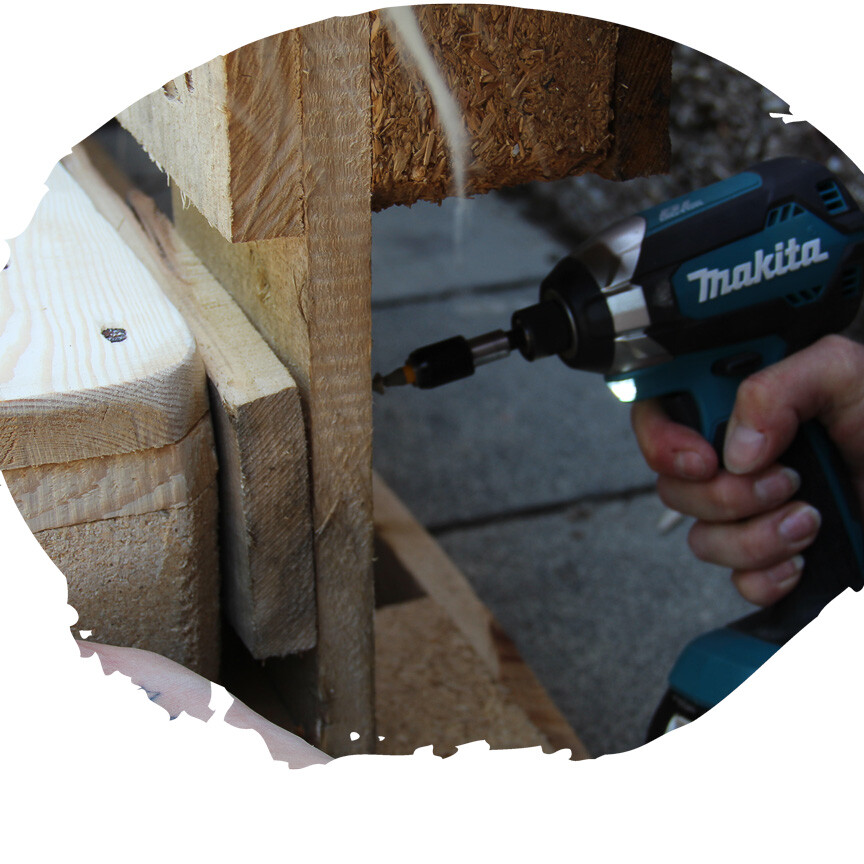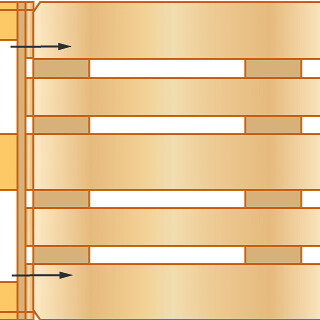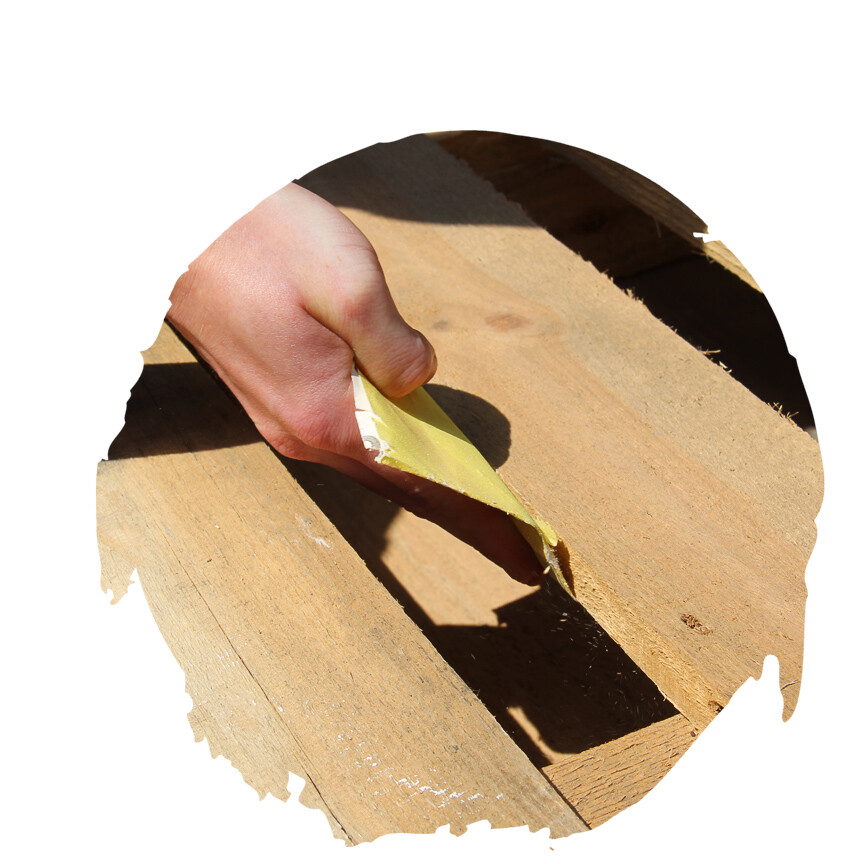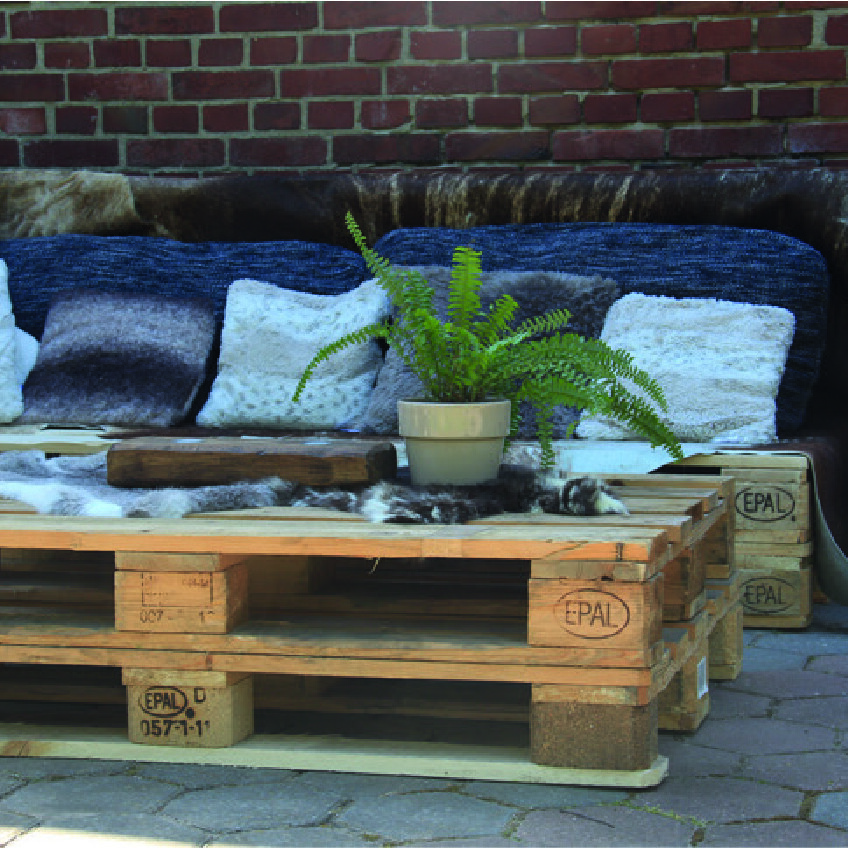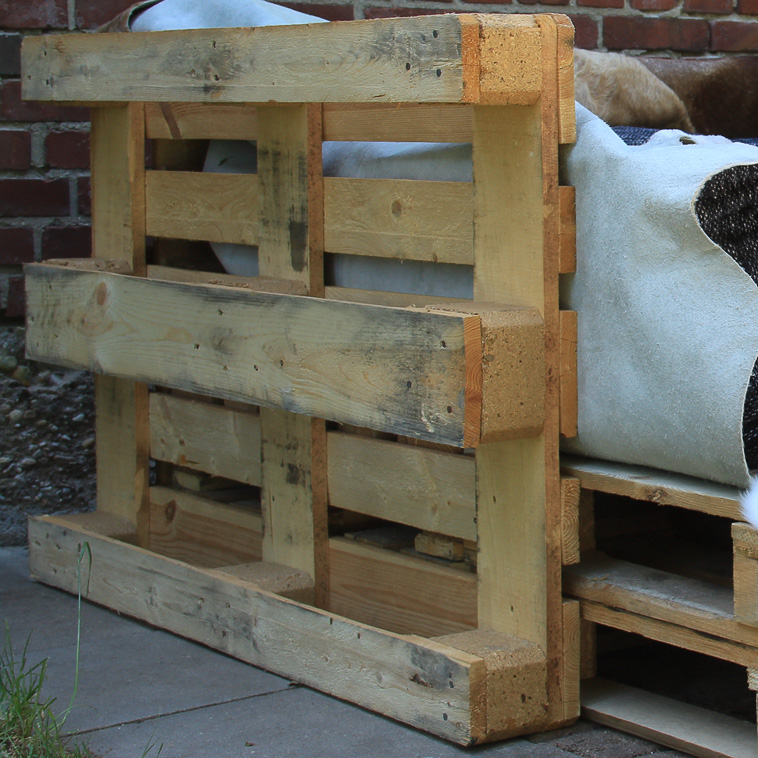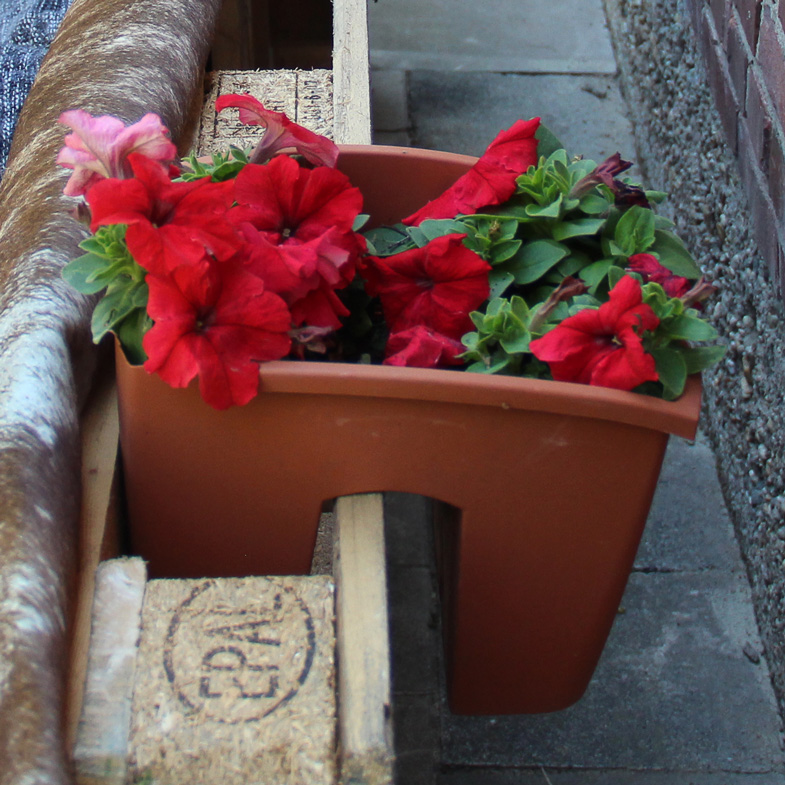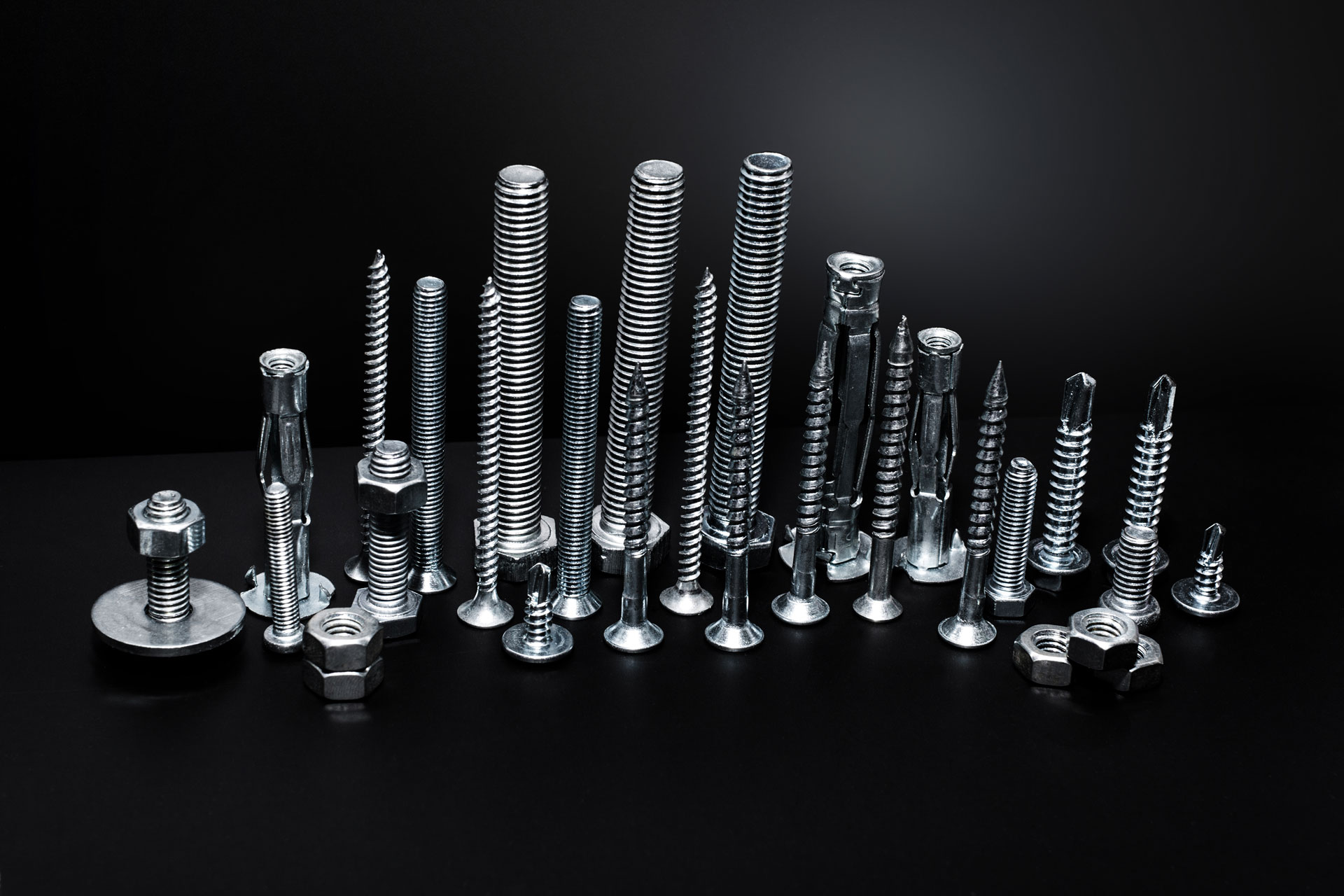Screw history - Bauer and Schaurte
Inbus® & Verbus: The eventful history of the Bauer & Schaurte screw factory.
Who is Bauer & Schaurte
and why are they so important?
Bauer & Schaurte is a German company founded in 1876 by Georg Bauer and Christian Schaurte. The company is best known for the invention of the Inbus® screw and the Verbus screw screw. However, the idea of a hexagon socket screw was by no means new. In 1910 William G. Allen patented a manufacturing process for screws with a hexagonal drive profile in the screw head. In the USA, these screws are therefore called "Allen screws" and the hexagon socket wrench is often called "Allen key".
Also of interest: The Standard Pressed Steel Company (SPS) is said to have developed Allen screws independently of Allen in about 1911. SPS's motivation was to develop set screws without protruding screw heads and thus increase machine safety. (Clothes can get caught on protruding screw heads; a recessed grub screw eliminates this risk.) The inspiration was SPS internal square-head screws from the UK (Robertson screw), which SPS did not want to use due to cost and patents. It is not known how SPS manufactured the screws. However, since Allen only held the patent for a specific manufacturing process, Allen's patent could be circumvented if necessary.
In 1936, Bauer & Schaurte patented this type of screw in Germany and introduced it to the market. The technique was developed among others by Walter Beduwé, then chief engineer, further developed and perfected it.
What is Inbus®?
The Allen® screw (Innense hexagon head screw Bauer und Schaurte) is a self-centering screw specially developed for space-saving and secure joining of metals. In this type of screw, an internal hexagon is countersunk in a cylindrical screw head. Compared to the hexagon head screw (with external hexagon head), less space is required for the head. Compared to a Phillips screw of the same size, a hexagon socket screw can absorb about ten times the torque. Hexagon socket screws are well suited for screw connections where the screw heads are difficult to access due to the design. It is sufficient if the head can be reached from above, for example through a hole whose diameter is larger than the corner dimension of the respective wrench. With wrenches whose tip is ground spherically, the screws can be tightened and loosened even if the wrench and screw are not aligned. Hexagon socket screws can also be countersunk to save space if protruding screw heads are a nuisance.
What is Verbus?
Eight years earlier, Neuss engineers were said to have developed the Verbus screw (verhardened hexagon head screw Bauer und Schaurte) have developed. It is a screw produced by solid forming and chipless, which has an uninterrupted grain. In contrast to the screw machined from the solid, the waste is lower and the screw is stronger, since it is not cut under the head but swaged.
Both screws are still used today in industry and crafts all over the world.
What happened then?
From 1980 onwards, the history of the Bauer and Schaute company became somewhat turbulent. There were several takeovers by various companies. First there was a merger as a subsidiary of Saarstahl to Bauer & Schaurte Karcher GmbH (BSK) until Saarstahl went bankrupt in 1993. Then there was a takeover from the Valois Group, then Textron, until in the end Withesell took over the company in 2013. In 2015, Withesell was then sold to Nedschroef Holding, which still exists today.
- 01.07.1876 Foundation of the company founded by Christian Schaurte and Georg Bauer
- 1917 Takeover from Werner T. Schaurte
- 1936 Patenting of the Inbus brand in Germany
- 1970 Takeover of Funcke and Hueck in Hagen
(more) - 1980 Merger with Karcher-Schraubwerke to form Bauer & Schaurte Karcher GmbH (BSK) as a subsidiary of Saarstahl
- 1993 Insolvency of Saarstahl and thus also for BSK
- 1994 Takeover by the Valois Group to form Bauer & Schaurte Karcher Verbindungstechnik GmbH
- 1996 Acquisition of Textron to form Textron-Fastening-Systems
- 2006 Acquisition by another investor to Acument Global Technologies, who are still licensee of TORX among others
(more) - 2013 Acquisition by an American investor Whitesell
- 2014 Closure of the plant in Neuss
- 2015 Sale of Whitesell to the Dutch company Nedschroef Holding
(more)
And now?
On the former factory site of Bauer & Schaurte, north of the Neuss main train station, an Inbus® quarter is to be built. On the one hand, it is to be a monument, but also create urgently needed living space. On 16.09.2020 there was a walk-through for this purpose where some historical documents were recovered. Dr. Albert Wunsch has created an interim exhibition where anyone who wishes can view the salvaged documents and equipment. Other relics can be viewed in the Neuss City Archives for a closer look.
Something about the license rights of "Inbus®".
From 1970, the Bauer and Schaute company had the corresponding hexagon socket wrenches made by the company Hafu Werkzeugfabrik GmbH in Hagen, Germany. After a very eventful company history, 29-year-old Fabian Fuhrmann the rights to the Inbus® brand. Fabian Fuhrmann is the descendant of Hans Jürgen Fuhrmann, who founded Hafu Werkzeugfabrik.
The companies founded for this purpose Inbus Werkzeug GmbH and the Inbus IP GmbH are really serious about licensing rights. There has been a veritable wave of warnings - but without penalties. Because the Fuhrmanns want to establish and expand the brand. Today, HaFu is still one of the world's leading manufacturers of hexagon socket and TORX® tools.
Are you interested in hexagon socket screws?
We from WEWO see ourselves as problem solvers and are there to help you with your questions in word and deed. We offer solutions for your application problems and a large product range from which you can draw!
Please feel free to contact us or have a look in our store:
Difference V2A V4A - explained simply and quickly!
Do you also often screw stainless steel screws? Or do you simply often have to deal with stainless steel components? Do you sometimes ask yourself what "V2A" and "V4A" actually mean and how they differ?
We get such questions quite often in everyday life and want to give a very rough and simple answer to them here:
Origin of terms
Steel is named according to material numbers, which is why today a distinction is made between V2A and V4A, for example. The V in the designation stands for trial, as different alloys were tried out. The A stands for austenite, this element is responsible for the non-rusting of steels. The difference between V2A and V4A therefore lies in the alloy. Both have a chromium and nickel content, but in the case of V4A steel, other elements are then added.
Let's take a closer look at the differences and what they are good for!
V2A
V2A stands for "experimental melt 2, austenite".
The original steel material 1.4300 (material number). The alloy code is X12CrNi18-8 and states that it contains 17-19% chromium, 7-9% nickel and a maximum of 0.12% carbon. In addition, there are elements such as manganese, phosphorus and sulphur in smaller (defined) quantities. In the meantime, this original steel material is no longer used. Nowadays, V2A includes the material 1.4301 (X5CrNi18-10), the material 1.4307 ( X2CrNi18-9) and the material 1.4305 (X10CrNiS18-9 and X8CrNiS18-9). The material 1.4305, also known as AISI 305, has a higher sulphur content. The materials 1.4301 and 1.4307, on the other hand, have a higher proportion of nickel and a lower proportion of carbon. The steel with the material number 1.4301 is also called AISI 304 and should only be welded using the electric method. Under no circumstances should the gas fusion welding process be used here.
The V2A steels can withstand a temperature of up to 600° Celcius. However, if the steel is to be exposed to an even higher temperature, for example up to 900° Celcius, the steel with the material number 1.4541 (X6CrNiTi18-10) should be used. This alloy includes titanium as well as the usual elements. It is resistant to steam, combustion gases and petroleum products, among other things. The steel can be welded well with all welding methods and thermal post-treatment is not necessary.
These steels are particularly well suited for polishing and processing. This is why they are used for the production of household appliances and other household items such as cutlery. But also in the construction of vehicles, sinks and railings, as well as for use within the pharmaceutical and cosmetics industries.
The disadvantage of V2A steel is its non-resistance to chlorides. Therefore, the V4A steel was alloyed.
- can withstand a temperature of up to 600° Celcius .
- Titanium-based material 1.4541 can be welded well with all welding methods.
- Good formability, even when cold.
- These steels are particularly well suited for polishing and processing.
- For the manufacture of household appliances and other household items such as cutlery, as well as the construction of vehicles, sinks and railings, and for use within the pharmaceutical and cosmetics industries.
V4A
V4A steel stands for "experimental melt 4, austenite".
This is alloyed with molybdenum and makes up a component of about 2%. The addition of molybdenum makes the steel more resistant than V2A steel. This means that it offers particular protection against corrosion in combination with chloride. The V4A steel is marked with the tool number 1.4401 (X5CrNiMo17-12-2).
The alloy of this steel can also be changed further. If the material is to be even more corrosion-resistant, the steel with the number 1.4571 (X6CrNiMoTi17-12-2) is used. Titanium is added to this steel, which is also called AISI 316, just like the temperature-resistant V2A steel. It can be welded well with all welding methods and heat treatment after welding is not necessary. For the use of V4A steel at lower temperatures, the material number 1.4404 (X2CrNiMo17-12-2) is recommended. This steel is less expensive. Most corrosion-resistant and stainless steels are called Alloy. They can be recognised by the alloy number X1NiCrMoCuN25-20-7.
Like V2A steel, V4A steel can be easily formed, even when cold. It can therefore also be stamped, deep-drawn and bent. The disadvantage of this steel is its machinability, which is why, in contrast to V2A steel, it is not suitable for the production of milled and turned parts.
It is therefore not surprising that this steel is mainly used in salt water, in the chemical industry and in swimming pools.
- Good formability, even when cold.
- Titanium-based material 1.4571 can be welded well with all welding methods.
- Alloy steel with alloy number X1NiCrMoCuN25-20-7 most corrosion resistant and stainless steel.
- This steel is mainly used in salt water, in the chemical industry and in swimming pools.
Why can VA2 or A4 steel still rust?
Despite the special steel, it is possible for it, and the products made from it, to rust.
This happens when the external influences are too strong. Then the actually impermeable layer of chromium oxide is no longer sufficient to protect against rust.
When surfaces made of stainless steel are welded, a high temperature load (oxidation) occurs, which is shown by the typical blue discolouration. The chromium around the welding area is degraded and a consequently higher iron concentration remains. If this is observed, the susceptible and unprotected areas should be reworked and maintained so that rust protection can reappear. (Reference to pickling)
Even if the V2/4A steel comes into contact with conventional steel made of carbon or similar, the rust protection can be impaired. The rust protection can also be lost if uncleaned (already rusting) tools are used during production. Surface rust then develops, as the smallest steel particles settle due to mechanical abrasion.
V2/4A steel screws
By the way, the stainless steel described is also used for ordinary screws.
These stainless steel screws are rust-free due to the alloys of the steel and are therefore more resistant and durable than conventional screws made of other materials such as zinc. Stainless steel screws made of V4A steel are also resistant to acids. This is why stainless steel screws are used especially outdoors, where they are exposed to all these materials and substances.
However, it should also be noted that the material is not hardenable due to its composition. Therefore, it cannot be processed with as high a torque as the conventional galvanised screw with higher strength.
Do you have further questions on the topic?
We at WEWO see ourselves as problem solvers and are at your side with help and advice for all your stainless steel questions. You not only have the option of purchasing your stainless steel products from us, we also offer solutions for your application problems.
For our customers we offer a special surface treatment that reduces cold welding (galling). Did you know that we also sell special screws made of V4A and V2A steel? In addition, we also offer fastening technology, tools, factory equipment and other industrial supplies made of this steel.
Feel free to contact us!
Kanban - briefly explained
Who & When?
In 1947, Taiichi Ohno, the inventor of the Toyota Production System (TPS), invented the Kanban method.
Among other things, the JIT concept (just-in-time production), which is part of the production system, was decisive.
Where does the word KanBan come from?
The letters K and B are pronounced clearly in the syllables. Thus, the Japanese origin is easy to discern and means something like map, board or receipt.
What is it?
At the heart of a Kanban storage system is the translated word card.
This card acts as an order trigger. This fictitious card can have many faces today, such as the scan of a barcode, the push message of an RFID system or much more.
So nothing works without a map, whether digital or physical.
In summary, the Kanban method is based on the pull principle. This means that the productions are supplied with goods according to estimated or concrete demand. Thus, the procurement of materials is organised according to the respective consumption.
What are the species?
Today's Kanban is divided into two meanings: The Kanban board and the Kanban storage system.
In short, a theoretical and a practical form.
A Kanban board is a development method used to support production processes. With the Kanban boards we also find the Kanban cards. These cards are essential information carriers that provide information about production, storage, purchasing and transport.
They include, for example
- Kanban card numbers
- Production Kanban
- Purchasing Kanban
- and much more
At Kanban storage system the consumption of a defined quantity is recorded and passed on as demand. These quantities are calculated in such a way that the remaining stock quantities are sufficient until the new deliveries arrive. Thus, this system not only eliminates a lot of effort, but also offers the best possible security in the supply of goods.
We are mainly concerned with the Kanban storage system.
Here, an optimal procurement and storage of goods is guaranteed in different ways and according to individual requirements.
Our WECO Kanban storage system differs in terms of service in the following areas:
Where is it used?
Kanban is mainly used in the manufacturing sector. Especially in so-called series or serial production, this storage system protects against production downtimes, because smooth processes and constant stocking of the required goods protect against delivery bottlenecks and thus against production downtimes.
Kanban can be used wherever constant goods are consumed and needed at regular intervals. The system can be found in everything from the small carpentry workshop next door to the large car manufacturer.
Conclusion
Kanban is a Japanese system that supports processes theoretically or practically, depending on its use. The aim is to minimise processes and streamline recurring tasks. It is an optimisation and gain in security. This saves the company time and money.
- Cost saving
- Time saving
- Fail-safe
- Everything in one place
- Optimised ordering process
- Stability
Your personal contact
Jan Delbeck
Project Management WECO System Supply
M +49 172 2572779
T +49 2834 913235
E jan.delbeck@wewo.de
Book a meeting
The pallet lounge!
Make yourself comfortable: THE PALETTE LOUNGE!
Design: simple
Requirement: simple
Total width: 2544 mm
Depth total: 2144 mm
Start the summer with your new project: a cosy lounge for the garden! Who needs a holiday when you can make it nice for yourself in "gardenias"? By the way, also suitable for "balconies" or "terraces" - if they are big enough. Total width: 2544 mm Total depth: 2144 mm 1200 1200 2400 2544 144 144 800 1200 2144 1200 1200 2400 2544 144 800 144 288 Top view Frontal But: How do you do it and what do you need? We were allowed to accompany Daniela and were thus able to provide instructions on how to build the furniture. For this project, we deliberately chose a lounge with a straight backrest. A sloping backrest is often perceived as more comfortable, but Daniela compensates for this excellently with cushions. In addition, this model is easy to build and offers other advantages. We will go into some of the advantages and variations in the description. Let's go!
Material used:
- Cordless impact wrench DTD153RTJ
Alternative from the campaign: Cordless drill driver 18V / 3.0Ah, 2 batteries, charger | Cordless impact drill 18V DHP482RFX3 - Cordless angle grinder DGA511RTJ Alternatively from the campaign: Cordless random orbital sander DBO180Z
- SPAX T-STAR stainless steel screws 5x40, 5x80 Alternatively from the campaign: Decking screws 5x40, Decking screws 5x80, SPAX T-STAR range
- Bit box or matching bit
- 9 Pallets
Prevent cold welding stainless steel
Cold welding and corrosion on stainless steel is a recurring problem for every technician. Once the screw is stuck, nothing can be done - often the only thing that helps is an angle grinder. This not only impedes a smooth workflow, but also gets on your nerves. But can you do something about it in advance?
Preventing cold welding of stainless steel - this is how!
Focused on solutions and results.
This is, of course, a situation that no one wants to have. We see ourselves as partners and problem solvers at your side and have asked ourselves: How can this be avoided simply and efficiently? And how can we support you in solving the problem?
Stainless steel fasteners (and also other stainless materials) can "seize" when tightened. This is the so-called "cold welding" that occurs at room temperature for various reasons. The material then fits so tightly into each other that it comes close to normal welding. Factors that cause cold welding are wrong torques, contaminated or faulty threads and different or wrong materials. The subject of cold welding has been known for many years and since then people have been looking for the simplest possible means to make the work easier. There are many possibilities and methods that have been developed since then. Many work with various greases or anti-seize pastes. This works well, but it is time-consuming and you have to use it correctly, so sources of error are inevitable.
In cooperation with our partner, we can now offer you a simple, effective, sustainable and practical alternative: The anti-cold welding coating! This high-quality and resistant coating meets the highest technical requirements. The constantly low friction coefficient of 0.12 µG prevents cold welding. Stainless steel fasteners pre-treated with this coating can be screwed together at up to 800 revolutions per minute and loosened again at any time without being destroyed. For you, this means maximum efficiency and cost-effectiveness and, at the same time, saving resources such as time and money. Another advantage for you: the coating complies with the strictest rules of legislation in terms of quality and the environment. Therefore, these ready-to-use threaded connections can be used directly in the food/pharmaceutical industry, offshore, maritime, structural and civil engineering.
Efficient and cost-saving
Working with fasteners coated by us is for the following reasons
efficient and cost-saving:
- Up to 800 rotations instead of 25 rotations per minute, thus up to 32 times faster screwing!
- Meets FDA requirements and is also approved in pharmaceutical and. Complies with ELV (2000/53/EC)
- coating from natural raw materials and minerals and is therefore environmentally friendly!
- For maintenance work, easy detachability of the fastening
- Each screw connection can be used straight from the packaging Resistant to salt and fresh water (960 hours salt spray test)
- Harmless for humans and the environment
- Assembly with an impact wrench is possible under certain conditions
- Thin, non-soluble film instead of thick, difficult-to-dose lubricants
- Applicable from -140°C to +1400°C
- Screws are reusable several times
